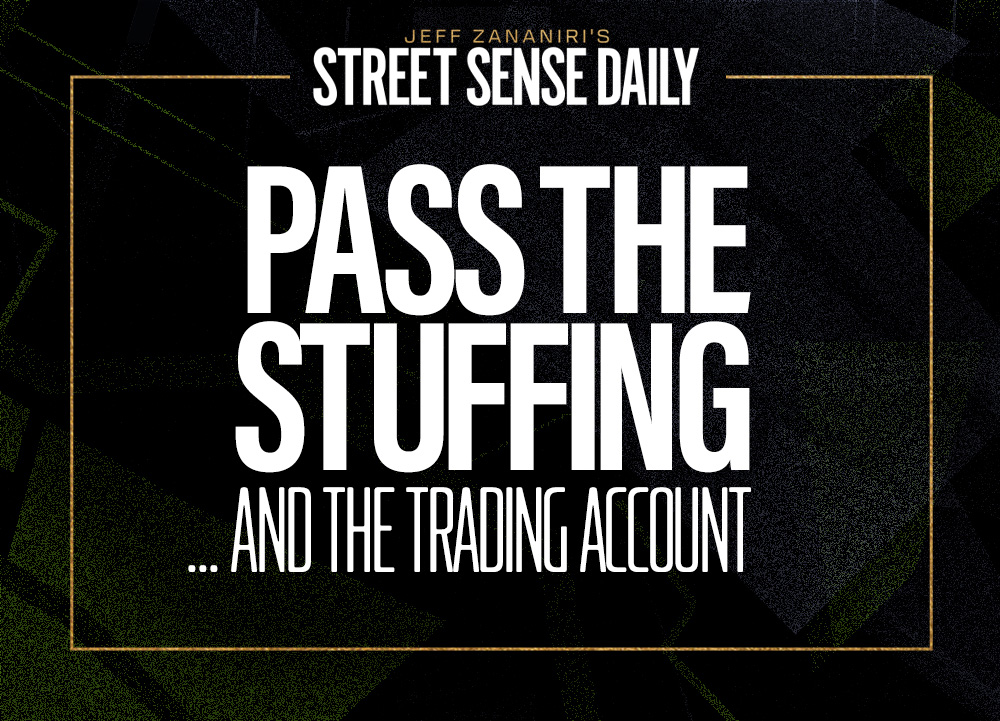Good morning, traders,
If you’ve been in this business a minute, you’ve probably seen how fast the market can rip your face off after a headline drops.
One second, everything’s calm, and the next, the S&P 500 moves 40 points.
It doesn’t matter whether you’re bullish or bearish; if you’re not prepared, you get steamrolled.
That’s what a news-driven market does.
It doesn’t care about your charts. It doesn’t care about your moving averages or some technical setup you found on YouTube.
It moves fast, it’s emotional, and it’s fueled by algo reactions to a single word in a press release.
But that doesn’t mean you have to sit on the sidelines.
In fact, some of the best setups I’ve ever traded came because of the chaos.
You just have to know how to play it.
Here are three strategies I use when the headlines are moving the tape.
1. Fade the First Move
The market loves to overreact.
Jobs report misses by a mile? The S&P tanks 60 handles in 10 minutes.
CPI comes in slightly cooler? Tech rallies like it just discovered electricity.
The first move is usually emotional. Algos scan the headline, rip the market in one direction, and then traders pile on without reading the fine print.
That’s where the opportunity comes in.
Let the dust settle for five or 10 minutes. See where the move stalls.
If it looks like it’s overdone — meaning price isn’t following through, volume starts drying up, and the second candle reverses — then you have a shot to fade it.
But this isn’t guesswork. You need a clean level to trade against. Prior resistance. Major support. Something that says, “This is where buyers or sellers should show up.”
If it holds, you fade the move. If it breaks, you bail. Simple as that.
2. Wait for the Retest
News shocks create knee-jerk reactions — and then retracements.
Smart money doesn’t chase the initial move. They let the panic buyers or sellers jump in, then wait for the retest to load up.
Let’s say the Fed raises rates and the market spikes higher.
Don’t chase. Watch for the pullback to the breakout level.
If buyers step in on that retest and hold the line? Now you’ve got structure.
Same thing on the downside. If the market flushes and then bounces, wait for it to come back to that breakdown level.
If it rejects again, that’s your entry.
The retest gives you a defined risk and a much better probability. It’s where real trades get placed — not panic trades.
3. Use Options to Define Your Risk
When the market’s flying on news, stops can get blown right through.
It’s not uncommon to see 20-point gaps in the S&P or Nasdaq in seconds.
If you’re trading futures or common stock with tight stops, you’re playing Russian roulette.
That’s where options come in.
You can control your risk upfront. If you’re bullish on a news reaction but worried about a rug pull, you can buy a call spread. Or a straight call if you want more juice.
Worried about a fakeout higher? Grab a put debit spread — low cost, defined risk, and a clean shot at a sharp reversal.
You don’t need to risk $5K to make $500. You can risk $300 to make $900 and sleep at night.
In a news-driven market, that’s a gift.
Patience Pays
A headline-driven tape can either be a goldmine or a graveyard, and it all comes down to how you approach it.
Don’t chase the first move. Don’t guess. Don’t over-leverage.
Stay patient. Trade levels. Let the algos do their thing, then step in when the emotional dust clears.
And if you’re going to swing, use options to box in your risk so you can actually stay in the game long enough to win.
This isn’t about being smarter than the machines. It’s about being disciplined enough to let them make the mistakes first … then stepping in with a real plan.
That’s how pros trade a headline tape.
Stay street smart,
Jeff Zananiri
P.S. Join Aaron Hunziker today at 2 p.m. ET for APEX Live, where he’ll walk you through the setups we’re watching, how the market’s reacting, and where the real opportunities are right now.
Be ready.
📅 Today | ⏰ 2 p.m. | APEX Live
*Past performance does not indicate future results



